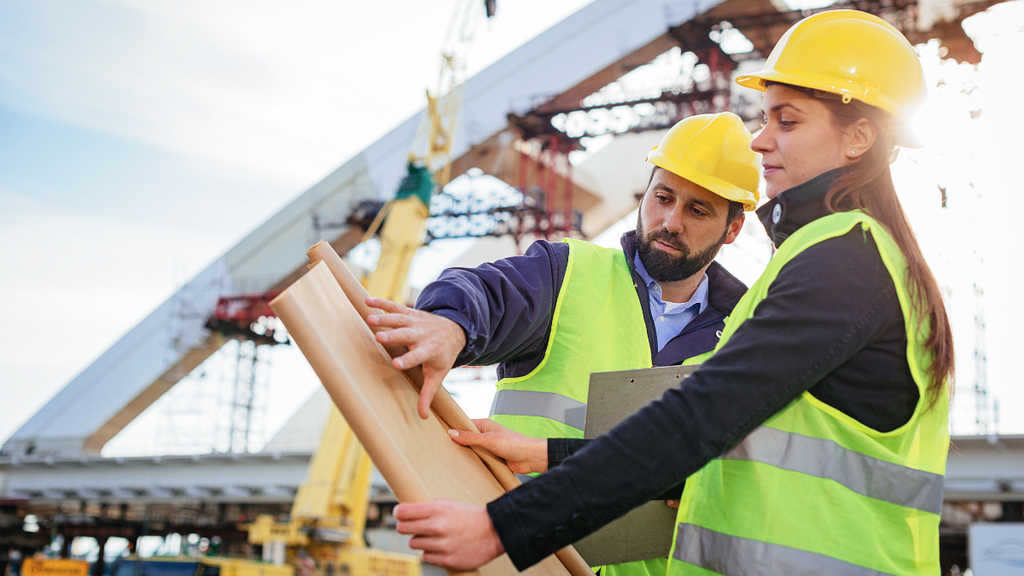Rumored Buzz on Geotheta
Rumored Buzz on Geotheta
Blog Article
A Biased View of Geotheta
Table of ContentsThe 5-Minute Rule for GeothetaWhat Does Geotheta Mean?The Basic Principles Of Geotheta Some Of GeothetaThe Definitive Guide for Geotheta

They conduct site investigations, gather examples, do research laboratory tests, and evaluate information to assess the suitability of the ground for construction projects - Geo Tech Engineer. Based upon their findings, geotechnical engineers supply referrals for foundation design, slope stability, retaining structures, and mitigation of geotechnical hazards. They work together with other experts, such as designers, structural designers, and construction groups, to ensure that geotechnical considerations are integrated into the general project layout and execution
By evaluating the habits and residential or commercial properties of soil and rock, they can identify possible geotechnical dangers such as landslides, dirt settlement, or slope instability. Their expertise assists stop failures or accidents that might endanger lives and home. Here are some detailed duties and duties of a geotechnical designer: Site Investigation: Geotechnical engineers conduct website investigations to gather information on subsurface conditions.
They translate the information to recognize the residential properties and actions of the dirt and rock, including their stamina, permeability, compaction qualities, and groundwater problems. Geotechnical Analysis and Design: Geotechnical designers assess the information gathered during website investigations to analyze the security and viability of the website for building jobs. They perform geotechnical calculations and modeling to evaluate variables such as birthing ability, settlement, incline stability, lateral earth stress, and groundwater circulation.
Facts About Geotheta Uncovered
Structure Layout: Geotechnical designers play an essential duty in making foundations that can securely support the desired structure. They assess the dirt problems and load needs to identify the suitable structure type, such as superficial structures (e.g., grounds), deep structures (e.g (https://medium.com/@ianhammond2191/about)., heaps), or specialized techniques like soil renovation. They take into consideration aspects such as settlement limits, bearing capability, and soil-structure interaction to establish optimal structure layouts
They evaluate building plans, display site activities, and perform area evaluations to validate that the style recommendations are followed. If unpredicted geotechnical issues arise, they examine the circumstance and offer recommendations for removal or adjustments to the layout. Danger Evaluation and Reduction: Geotechnical engineers analyze geotechnical threats and dangers connected with the project site, such as landslides, liquefaction, or soil disintegration.

Cooperation and Interaction: Geotechnical engineers function carefully with various other experts associated with a task, such as designers, structural engineers, and construction groups. Efficient communication and cooperation are necessary to incorporate geotechnical considerations right into the total project design and construction procedure. Geotechnical engineers give technical experience, answer questions, and make sure that geotechnical demands are satisfied.
Not known Incorrect Statements About Geotheta
Below are some sorts of geotechnical designers: Structure Designer: Structure engineers concentrate on creating and assessing structures for frameworks. They examine the soil conditions, lots requirements, and website features to determine the most appropriate structure kind and layout, such as shallow foundations, deep structures, or specialized strategies like heap foundations.
They examine the variables affecting incline stability, such as soil properties, groundwater problems, and slope geometry, and develop techniques to stop slope failings and minimize dangers. Earthquake Engineer: Quake designers focus on examining and developing frameworks to endure seismic pressures. They analyze the seismic risk of a website, review soil liquefaction potential, and create seismic design criteria to ensure the security and resilience of structures during quakes.
They execute area screening, gather samples, and assess the gathered data to define the soil residential properties, geologic developments, and groundwater conditions at a site. Geotechnical Instrumentation Designer: Geotechnical instrumentation engineers concentrate on surveillance and measuring the behavior of dirt, rock, and structures. They mount and keep instrumentation systems that keep track of elements such as soil settlement, groundwater degrees, slope activities, and structural displacements to assess efficiency and offer very early warnings of prospective problems.
Things about Geotheta
They perform tests such as triaxial examinations, debt consolidation examinations, direct shear examinations, and leaks in the structure tests to collect data for geotechnical analysis and layout. Geosynthetics Designer: Geosynthetics engineers focus on the design and application of geosynthetic materials, such as geotextiles, geogrids, and geomembranes. They make use of these products to improve dirt security, strengthen inclines, offer water drainage services, and control disintegration.
They tend to be investigative people, which means they're intellectual, introspective, and investigative. They are curious, systematic, rational, analytical, and logical. Several of them are also social, indicating they're kind, charitable, participating, person, caring, practical, understanding, tactful, and pleasant. Does this seem like you? Take our totally free profession examination to discover if geotechnical designer is among your leading profession matches.
In the office environment, geotechnical engineers utilize specialized software application you could try here devices to do estimations, create designs, and assess data. They prepare reports, testimonial task specifications, communicate with clients and team participants, and coordinate job activities. The workplace setup supplies a conducive environment for research, analysis, and cooperation with other professionals entailed in the task.
Top Guidelines Of Geotheta
They regularly see project sites to carry out website investigations, examine geotechnical conditions, and gather data for evaluation. These sees entail taking a trip to various places, sometimes in remote or difficult terrains. Geotechnical engineers might do dirt sampling, conduct examinations, and screen building activities to ensure that the geotechnical facets of the job are being executed correctly.
Geotechnical designers also function in specialized geotechnical laboratories. In these facilities, they conduct experiments, execute examinations on soil and rock examples, and examine the engineering buildings of the products. Geotechnical lab designers function extensively in these settings, handling testing tools, operating instruments, and videotaping information. They work together with other research laboratory team to ensure precise and trusted testing outcomes.
Report this page